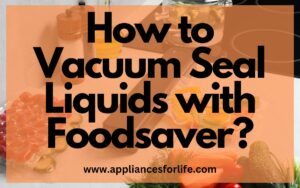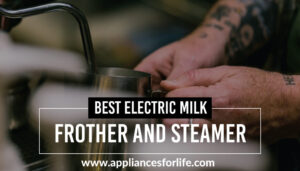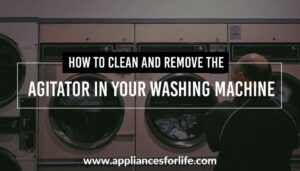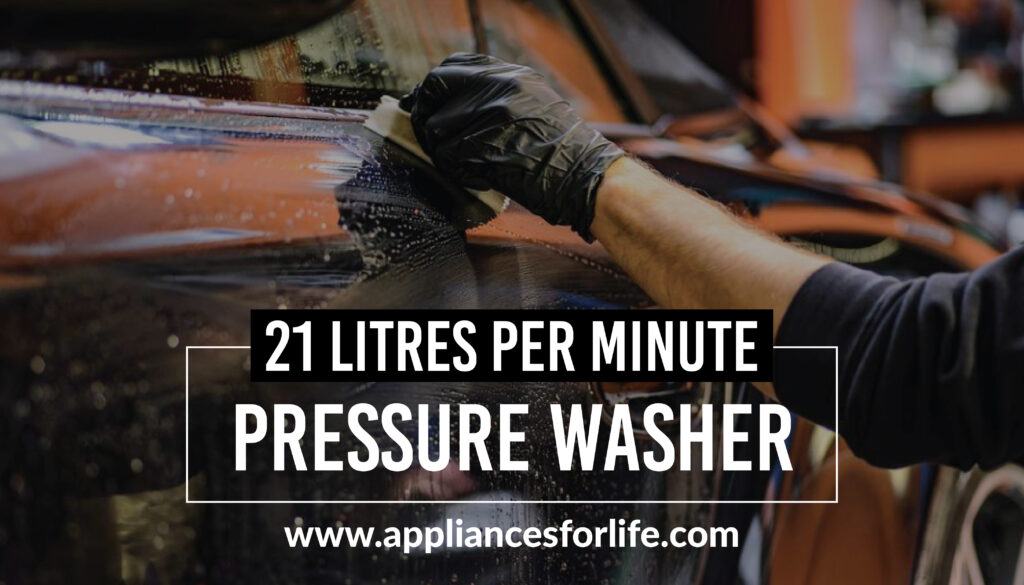- A pressure washer effectively cleans and restores all exterior surfaces around your home or even the streets. A pressure washer can help you quickly clean large areas of all kinds of hard outdoor surfaces. You can use a pressure washer to spray off a wooden deck, siding, a car, or a concrete surface. It gets those grimes off your walkway and makes it look new.
- If your looking for a very strong and powerful pressure washer, Honda pressure washers are a great choice. Honda is one of the largest manufacturers of engines in the world, and many brands and consumers trust their engines. Statistics reveal that they manufactured and marketed more than 23 million units of engines in 2009 alone. They are superior in terms of performance, efficiency, and reliability. They’re easy to use and don’t produces lots of noise.
Pressure washer manufacturers usually indicate the pressure per minute of a pressure washer so that consumers will know and understand the performance and the cleaning ability of a particular pressure washer. Whether you desire to own a 21 liters per minute pressure washer or one with a higher PSI, it is important to know that this pressure capacity is the major determinant of your pressure washer’s effectiveness. However, while you do your findings and scan through manufacturers’ reviews, remember that the advertised ratings for pressure washers are not always what you get; inconsistent methods of rating PSI/GPM across manufacturers can provide misleading information and potentially deliver misleading information much lower levels of performance than expected.
Table of Contents
Toggle
Nonetheless, rest assured that most manufacturers’ reviews are now reliable, provided the PWMA organization has duly accredited them; only then can you maintain some confidence in the advertised ratings for their products. The PWMA certification program ensures that the program participants adhere to the association’s PSI and GPM standards. To obtain the certification, manufacturers must have their gas and electric pressure washers tested and verified by an independent third party.
Therefore, to avoid falling prey to false manufacturer’s ratings, it is important that when you shop for your new pressure washer, make sure to find the PWMA label to ensure you take home the cleaning power you were promised.
Parts of a pressure washer
Just like any mechanical equipment, a pressure washer is made of several components that guarantee proper functioning. A pressure washer is less sophisticated than you probably imagine. It is just a water pump powered by an electric motor. The main parts of a pressure washer include the following;
Water inlet: This part of a pressure washer is the link between the major water supply source and the pressure washer. This link is made of a hose that connects the pressure washer to the main water supply. In the event of the passage of water into the pressure washer, there is a possibility of experiencing the entry of other solid substances that may cause significant damage to the pressure washer. As a result of this factor, therefore, a filter is affixed to the inlet to stop dirt or any similar substances. Little bits of grit are the last thing you want inside your washer—especially since they could come blasting out of the other end at high speed!
Electric Motor or Gas Engine: Most pressure washers run off the domestic electricity supply, especially smaller ones. However, bigger pressure washers are powered by compact gasoline engines, slightly similar to those found in lawnmowers. Pressure washers powered by gasoline are much more suitable for outdoor cleaning, especially in places where electricity supply is hard to find or where a long trailing cable would be dangerous or inconvenient). The motor or engine is designed to power the water pump.
The Water Pump: This is the heart of a pressure washer. It controls its whole essence of it. the water pump is driven at an incredible speed by your electric or gasoline motor, as the case may be. When the engine pulls the pump one way, it sucks water in from the faucet; when it pushes the pump the other way, the water squirts out in a high-pressure jet. Pumps are designed to handle a water flow of around 4–8 liters (1–2 gallons) per minute.
High-Pressure Hose: The pressure hose is the tube that runs from the washer to an affixed cleaning attachment of your choosing. A high-pressure hose is a necessary tool to pressure a washer because an ordinary bit of tubing would not be able to survive the high pressure of the water flowing through it; it may rupture it. However, a high-pressure hose is so called because it is strong enough to take this pressure; it is reinforced with a wire mesh and has two or more layers of high-density plastic.
Cleaning attachment: Your choice of cleaning attachment should be influenced by the kind of surface you are cleaning and the toughness of the dirt on that surface. you can switch from a simple trigger gun (essentially just a valve that lets water through only when you squeeze the handle) to a spinning wand spray or a rotating brush to scrub your drive. Powered attachments are driven by the force of the water flowing through them.
How Pressure Washers Work
From the parts of a pressure washer highlighted above, it is clear that this machine combines the function of a garden hose and an air compressor- the compressor breeds the pressure required for washing heavily grimed surfaces. As a matter of fact, pressure washers can aggressively blast things clean with water jets pressurized at about 70 times the pressure of a garden hose. While at the same time, they can also gently spray with lower pressures for delicate cleaning.
A quick summary of how a pressure washer works is that, from the basics, detergent is supplied to the machine because of its ability to break down the hold of dirt and grime conveniently. It then flows down into the machine through a hose. Through the water inlet, cold water flows into the pressure washer, and it is filtered in the process. The electric or gasoline motor powers the washer and the water pump, drawing in a water-detergent solution. Some washers proceed to heat this solution up to a temperature of 50–70°C (125–155°F).
And finally, the pump squirts out the hot, soapy water through the reinforced, high-pressure exit hose (and whatever attachment is fixed onto it). The narrow nozzle on these attachments helps to increase the pressure of the water jet even more. The high pressure of the jet not only cleans more effectively but means you’re wasting around 80 percent less water than if you used an ordinary low-pressure hosepipe (which is more economical if your water is metered).
Drawbacks of a pressure washer
Although pressure washers get things pretty clean but do not change the fact that they have some negative sides, they use a lot of water because water moves out quickly. Sometimes you may need 4-8 liters to complete your washing when the washer is squirting at 1-2 gallons per minute. In this situation also, it is necessary to have a working drainage system in the area to avoid the flood.
Another major drawback of using a pressure washer is that it can be very noisy- the sound level of a pressure washer is about 75-90dBA. Hence, you need to look out for the dBA value of the pressure washer at the point of purchase if that noise is a problem for you. Kärcher, for example, has produced models described as “Silent,” which claim to be 50 percent quieter. However, the spec for the (now-discontinued) K4 Silent still quotes a maximum noise level of 81dBA (hardly silent).
Pressure washers will blast filth in almost any direction while they work. They’ll even bl st dirt on you if you do not direct it appropriately. Therefore, think carefully about the order or direction in which you’ll work to minimize how much cleaning up you’ll need to do later. Choose your attachments wisely to avoid making too much mess, and be sure to wear waterproof, protective overalls and shoes.
Pressure washers should never be used on your delicate fixtures and fittings. Due to the immense pressure at which they discharge water, they can destroy and penetrate your wooden decking or weaken it, making them more prone to leaks or (in the case of double-glazing) “fogging up.” If unsure, try your washer on an inconspicuous area first—and use with a low-power setting (or a wide nozzle) before upping the power (or using a narrower nozzle) once you feel it’s safe to do so.
Honda Pressure Washers
Honda is a brand produced in China. And just like every other china home appliance, a Honda pressure washer will be a great addition to your store. This section highlights some of the best Honda pressure washers available to you.
Honda GX390 pressure washer
From its build and structure, you can tell that this machine is incredibly rugged. It releases a whooping pressure of 4200 PSI, and its motor runs on Gasoline- from this, you can infer that it is made for heavy-duty cleaning and can run for as long as your gasoline level will last. It is equipped with a thermal relief feature that prevents it from overheating. It has a spray gun, nozzle tips, and a monster hose. It weighs quite a ton of 141 pounds, and the hose is at least 50 feet long.
It is easy to assemble and easy to start. This PowerShot power washer is great for contractors specializing in deck cleaning, wood restoration, paint preparation, and all other professional services. It is sturdy and portable such that its welded steel frame construction with powder coated finish offers durability and corrosion resistance; 13-inch premium pneumatic tires deliver ease of maneuverability across various terrain and uneven ground.
SIMPSON PS3228 PowerShot Gas Pressure Washer
This honda pressure washer is a great choice for cleaning professionals looking for an outstanding pressure cleaning performance. It has the ideal power that every professional cleaner needs for tough cleaning. With a pressure capacity of 3300 PSI and a 2.5 GPM water capacity, you can use it to take care of all your outdoor, Jobsite, equipment, and facility cleaning without any trouble. It includes the thermal relief technology for cooling down.
This Honda pressure washer is pretty easy to assemble and easy to start. The GX200 premium engine and the PowerShot washer are perfect for contractors who specialize in deck cleaning, wood restoration, paint preparation, and other professional services. However, while such contractors use this pressure washer for these tasks, it is crucial to take necessary precautions to avoid damage to delicate surfaces.
It is strong, sturdy, and portable. The welded steel frame construction with powder-coated finish offers durability and corrosion resistance; 10-inch premium pneumatic tires deliver ease of maneuverability across various terrain and uneven ground. With this machine, you enjoy a lot of useful accessories that come with it. These accessories include; MorFlex 5/16-inch x 25-foot high-pressure hose that is kink- and abrasion-resistant; 5 Quick connect nozzle tips and Soap; Ergonomic spray gun 16-inch steel wand/lance.
PowerBoss Gas Pressure Washer Powered By Honda GC190 Engine
This PowerBoss pressure washer has a pressure capacity of 3100 PSI and a water capacity or water flow of 2.4 Gallons Per Minute. With a PSI of 3100, you are certain that it is perfect for excellent outdoor washing performance. To make things a lot easier and the spray gun maneuverable, it has a hose length of 30 feet. It comes with a wide variety of nozzle attachments fit for several kinds of surfaces. The nozzle sizes include; 5 quick connect nozzles (0°, 15°, 25°, 40°, and soap).
It has a wheel that provides the mobility required to deliver an excellent cleaning performance. It is also rugged and sturdy enough for rough terrains. The pump that comes with it is an axial cam pump which requires little maintenance, allowing you to spend time washing with the machine instead of trying to repair it. More importantly, its 1-gallon detergent tank ensures you always have soap ready to clean with, and a 25 feet high-pressure hope provides you all the control you need clean without moving the machine with you all the time.
SIMPSON 61014 PowerShot Pressure Washer Powered By Honda GX200
Another serious and efficient pressure washer you may want to consider when next you visit the store is the Simpson 61014 Powershot. This pressure washer comes equipped with a Honda GX200 engine for power, making it suitable for homeowners and professional cleaners looking for a powerful unit to work with.
FAQs
Do I need protective gear to operate a pressure washer?
Though you experience a lot of fun using an effective pressure washer, it is far from a toy. It is to be used with the utmost care, taking every necessary precaution. Due to the pressure at which the machine dispels fluid, you will want to wear your protective gear, to avoid injury to your body. For comparison, a standard garden hose probably has a psi of about 60, fire hoses start around 100 psi, and a medium-duty pressure washer can have a maximum pressure of 2,800 psi. Make sure to put on eye protection when you use a pressure washer. Ear protection isn’t bad for any loud, gas-powered model.
How do you hook up a pressure washer?
The pressure washer has one connection for a standard garden hose to bring water to the pump and another connection that connects the pump to a high-pressure hose with the spray wand on the end of it. Most units have some type of siphon hose for detergents, and any electric pressure washer will have a power cord. If this is not done properly, you could damage your pressure washer. For this, you will need an appliance repair kit to be fixed.
How do you use soap with a pressure washer?
You can use almost any liquid soap or detergent with a pressure washer, although there are pressure washer-specific detergents for jobs of all types. Your pressure washer will have a siphon hose or basin of some type, which you fill with the desired soap. Make sure any detergent cutoff valves are on, and then you can run the pressure washer as you normally would.
20 MINUTES
ESTIMATED TIME DESIGNING AND UPLOADING THIS ARTICLE
9 HOURS
ESTIMATED TIME RESEARCHING AND WRITING THIS ARTICLE
You Might Also Like

Ultimate Guide on How to Vacuum Seal Liquids with Foodsaver
Over the years, the vacuum sealing process has become an important process for anyone who wishes to store their food for a longer period. Other methods exist, but it’s safe to say the combination of vacuum sealing and refrigerator provide the best results. To vacuum

Top 4 Best Crosley 21 cu. ft. Freezers
Getting a good refrigerator brand to trust nowadays takes much thought. You have to be sure the brand offers the quality you need. Crosley is one of the good refrigerator brands you can trust, and this article discusses some of the best Crosley 21 cu.

Top 3 Best Electric Milk Frothers and Steamers
The appliances market is a big one, and it may be daunting when you are trying to get the perfect appliances for your kitchen because there are too many options. To make the process easier for you, we’ll be exploring the best electric milk frothers

LG Refrigerator LMXS28626S Reviews
There are lots of refrigerator brands but LG remains one of the biggest brands in the game. LG LMXS28626 refrigerator review would cover everything you need to know about the refrigerator ranging from notable features to its pros and cons. Being a 4-door refrigerator, we’ll

Is baking soda from Fridge and Freezer edible?
Top 3 Ways Baking Soda From Fridge And Freezer Will Clean Your Filthy Kitchen Is baking soda from fridge and freezer edible? You’ve probably suffered that predictable common confusion between Fridge-n-Freezer baking soda and baking soda. You can use Fridge and Freezer baking soda to clean

How To Mount A TV On A Tile Wall
Whether you’re moving into a new home or you just feel the need to have a TV installed in your kitchen with a tiled wall – the process is not always very easy. You just have to get it right. We’ve seen people ask questions

What Are The Best Washers And Dryers?
In this article, with the help of extensive research from our experts, you’ll be able to tell what the best washers and dryers combos 2022 are. We’ll be looking at them with the features that make them stand out amongst other washers and dryers. Also

What Kind of Gas Do Stoves Use?
In this article, we’ll be discussing the brief history of gas stoves, pros, and cons, as well as the different types of gas they use. We’ll also be talking about the differences between natural gas (methane) and propane which is also known as liquified petroleum

A Review Of 4 of The Best Frigidaire Silver Mist Appliances
From the manufacturing of simple electric cooling boxes to becoming one of the largest manufacturers of refrigerators worldwide, Frigidaire has really come a long way in the production of high-end home appliance gadgets. Although Frigidaire specializes majorly in the manufacturing of refrigerators, they also produce

How to Clean and Remove the Agitator in Your Washing Machine
Every washing machine type has something that sets it apart from the other. For the top-loading machine, it’s the agitator. In this article, we’ll be looking at how to clean and remove the agitator in your washing machine. The washing machine is one of the

